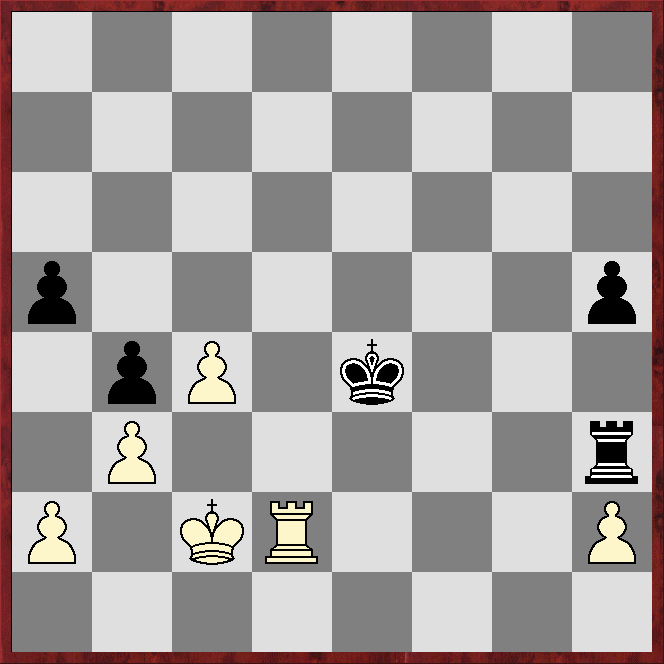[Clearly we are not talking about positions that are trivially won thanks to an overwhelming preponderance of material.]
Black is a pawn down, and it is a protected passed pawn, but this is only a single 'weakness'.
This 'principle of two weaknesses' is not a new idea - I had heard of it before, although, I have to confess, without paying it much heed.
What made this reference particularly memorable to me was that the author regarded the opponent being a pawn down as just a single weakness, for which a second weakness would usually be needed to covert the position into a win.
I am fairly sure I had not realised this before, but the maxim was brought home to me in my round-three game in the Munich 60+ seniors.
 |
Black has just played 45...b5-b4 in Spanton (1954) - Adam Wilczyński (1617) |
It is easy to see Black has no other weaknesses - both black pieces, for example, are more active than the white ones.
Stockfish17 and Dragon1 reckon the position is completely equal, ie 0.00.
I played what is White's only sensible move, 46.Kb2, after which Black has several moves that hold the draw.
The two most obvious are 46...Rf3 and 46...Ke5, both of which prepare for White pushing the passer.
As I explained in my notes to the game, after 46...Rf3 White can play 47.Rc2, but 47...Rf6 prepares to meet 48.c5 with 48...Kd5, after which the c pawn falls.
After 46...Ke5 White can again play 47.Rc2, but both 47...Kd6 and 47...Rf3 suffice to draw. Instead, 47.c5 can be met by 47...Rc3 48.Rc2 Rxc2+ 49,Kxc2 Kd5 50.c6 Kxc6 51.Kd3 Kd5 52.h4 Ke5.
However, my opponent chose 46...Ke3?, creating a second weakness as now the black king is misplaced.
The game finished quickly: 47.Rc2 Kd4 48.c5 Rc3?! 49.c6 Kd5 50.c7 1-0
A better try would have been 48...Rf3, but 49.c6 Rf8 50.c7 Rc8 leaves Black lost, eg 51.Rc4+ Kd5 52.a3! bxa3+ 53.Kxa3 Kd6 54.Ka4 etc.
LESSON: the 'principle of two weaknesses' is well worth bearing in mind in an ending, whether you are the superior side striving to force a second weakness on your opponent, or the inferior side trying to hold on for a draw.
No comments:
Post a Comment